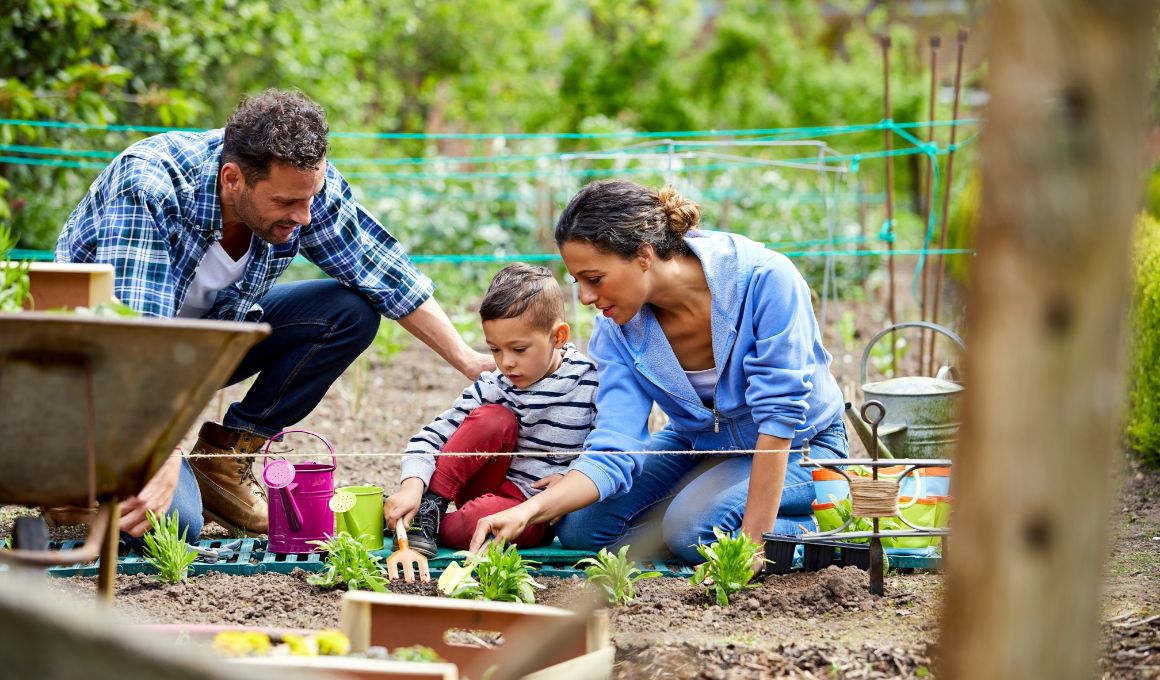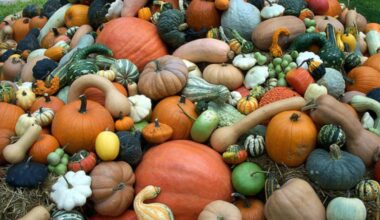Are you ready to embark on a gardening journey? Don’t worry if you’re a complete beginner – getting started with gardening can be easier than you think! In this comprehensive gardening guide, we’ll walk you through the simplest way to get started with gardening, step by step.
From choosing the right plants to maintaining a healthy garden, we’ve got you covered. Let’s dig in!
10 Easy Steps to Start a Garden
If you’re a beginner, it’s important to start small. Don’t try to create a huge garden right away, or you might get overwhelmed. Instead, try to pick a spot for your garden that gets full sun, and start with a few basic plants, like tomatoes or cucumbers.
Here are 10 easy steps to start your garden:
- Decide what you’d like to grow
- Determine your hardiness zone
- Pick a spot for your garden
- Figure out when your last frost date is
- Get your garden bed ready or create a raised bed
- Choose the right garden soil and compost
- Plant your garden
- Water your plants regularly
- Mulch around your plants
- Keep an eye out for pests and weeds
Gardening Tips for New Gardeners
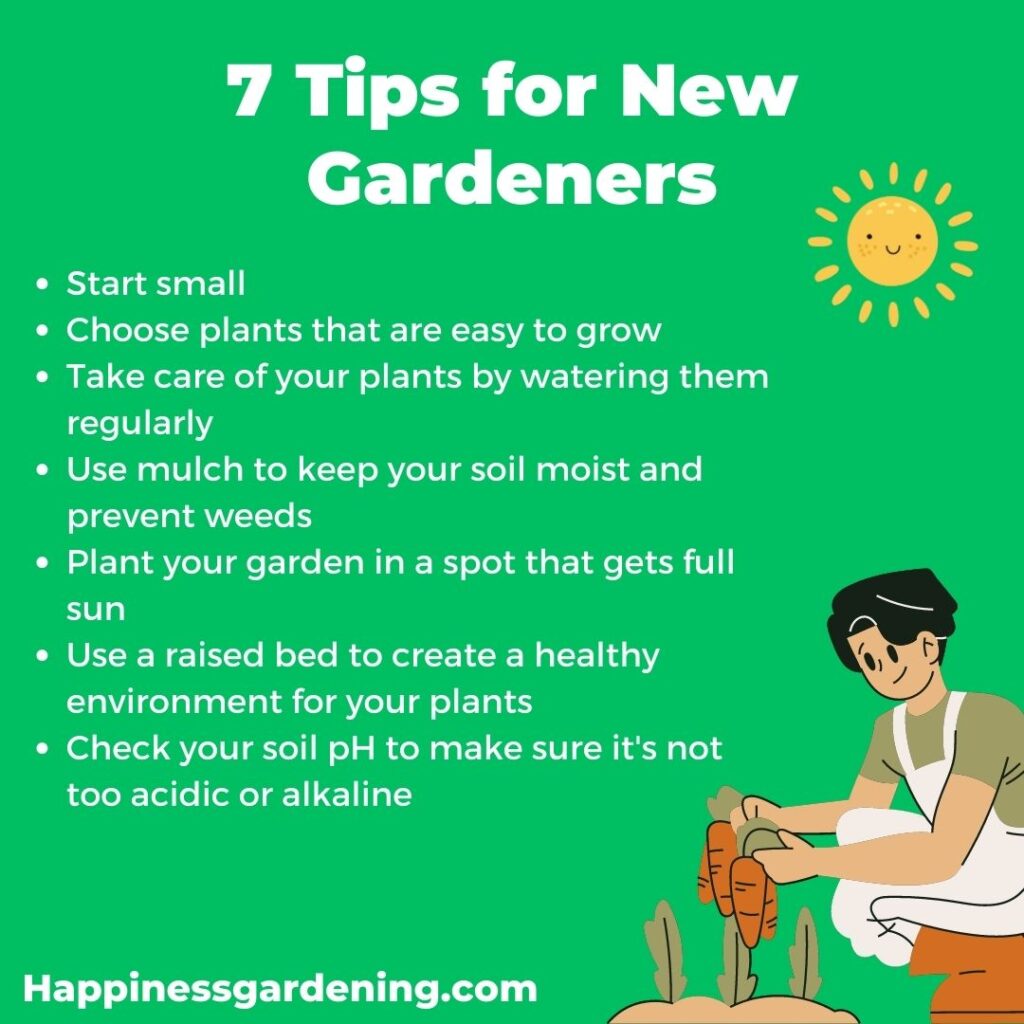
Starting a garden can be daunting for a new gardener, but with some basic knowledge and tips, you can create a garden that looks great and grows well. Some tips for new gardeners include:
- Start small
- Choose plants that are easy to grow
- Take care of your plants by watering them regularly
- Use mulch to keep your soil moist and prevent weeds
- Plant your garden in a spot that gets full sun
- Use a raised bed to create a healthy environment for your plants
- Check your soil pH to make sure it’s not too acidic or alkaline
What’s the simplest way to get started with gardening?
Gardening can be a fulfilling and rewarding hobby, but starting with the basics is important. Here’s a breakdown of the simplest way to get started with gardening:
Assess your space and sunlight availability
Before you begin, take a good look at your outdoor space. Assess the available area and the sunlight it receives throughout the day. Most plants require at least six hours of direct sunlight, so choose an area that meets this requirement.
Determine your gardening style and goals
Are you interested in growing flowers, vegetables, or both? Decide on the type of garden you want to create. Consider your goals, whether it’s enhancing your landscape, growing your own food, or simply enjoying the beauty of plants.
Research and select suitable plants
Now comes the exciting part – choosing your plants! Research plants that thrive in your climate and match your gardening goals. Consider factors like hardiness, water requirements, and the amount of maintenance they need. Aim for a mix of easy-to-grow plants and ones that pique your interest.
Prepare your soil
Good soil is the foundation for a successful garden. Test your soil’s pH level and make any necessary amendments to create optimal growing conditions. Add organic matter like compost or well-rotted manure to improve the soil’s structure and fertility.
Start small with container gardening or raised beds
If you’re new to gardening, it’s wise to start small. Begin with container gardening or raised beds, as they offer better control over soil quality and drainage. These methods also minimize the risk of weeds and pests.
Gather the essential gardening tools
To make your gardening experience easier, gather a set of essential tools. Some must-have tools include a trowel, pruners, a garden fork, and a watering can or hose. Investing in quality tools will save you time and effort in the long run.
Plant your garden
Once you’ve prepared your soil and gathered your tools, it’s time to plant! Follow the planting instructions for each plant, ensuring you give them enough space to grow. Water your newly planted garden gently but thoroughly to settle the soil and help plants establish roots.
Maintain your garden regularly
Consistent maintenance is key to a thriving garden. Water your plants regularly, especially during dry spells, and mulch around them to retain moisture and prevent weeds. Keep an eye out for pests and diseases, and address them promptly.
Learn and adapt as you go
Gardening is an ongoing learning experience. Don’t be discouraged by setbacks or challenges that arise along the way. Take the opportunity to learn from your mistakes and adapt your gardening techniques. Attend local gardening workshops or join online communities to gain insights and connect with fellow gardening enthusiasts.
Enjoy the fruits of your labor
As your garden flourishes, take a moment to appreciate the beauty and bounty it provides. Harvest your homegrown vegetables and flowers, and share them with friends and family. Gardening is a journey filled with joy and satisfaction, so savor every moment.
How to Maintain Your Garden?
To maintain your garden effectively, start by regularly watering your plants, ensuring they receive an adequate amount of water without overwatering.
Prune and trim your plants as needed to promote healthy growth and remove any diseased or damaged parts. Regularly weed your garden to prevent weed growth from competing with your plants for nutrients.
Additionally, fertilize your soil appropriately to provide necessary nutrients and consider mulching to retain moisture and suppress weeds.
Finally, monitor your garden for pests and diseases, taking necessary measures to control them and protect your plants.
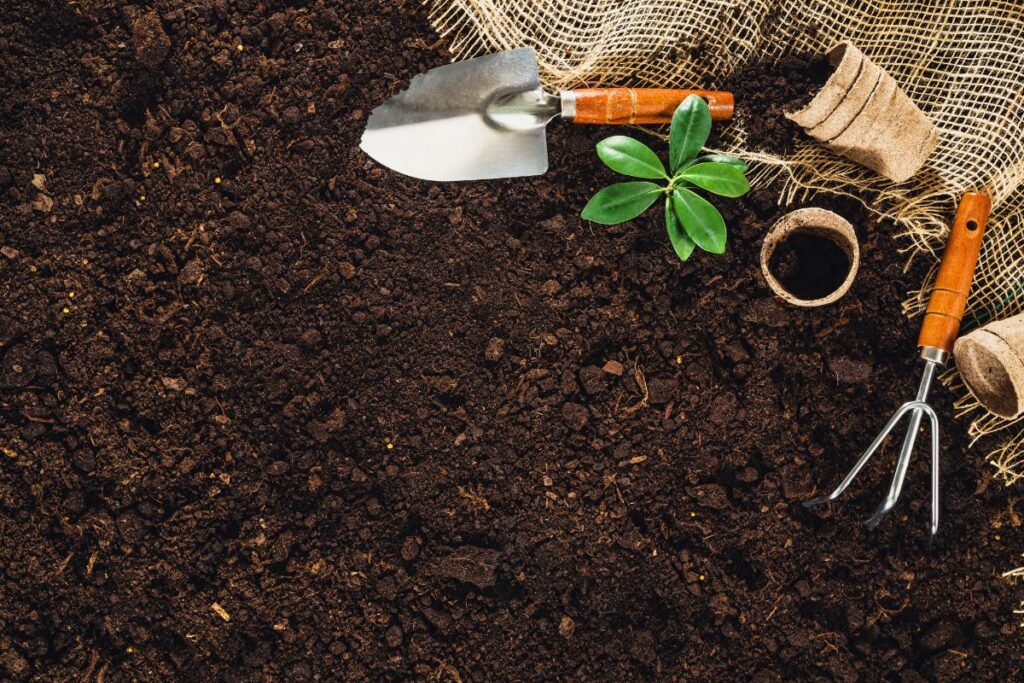
The Importance of Weed Control in Your Garden
Weed control is important for the health of your garden. Weeds can compete with your plants for water and nutrients, and they can also spread diseases and pests. Some ways to control weeds include using mulch, hand weeding, and using herbicides.
How to Use Mulch in Your Garden?
Mulch is a great way to keep your soil moist and prevent weeds. Mulch can also help to regulate the temperature in your garden, keeping it cooler in the summer and warmer in the winter. Some popular types of mulch include shredded leaves, straw, and wood chips.
How to Set Up a Raised Garden Bed?
Setting up a raised garden bed can be a great way to create a healthy environment for your plants. To set up a raised garden bed, you’ll need to choose the right location, build the raised bed, and fill it with soil and compost. You can also add a layer of mulch to help conserve moisture.
What Should You Grow in Your Garden?
The choice of what to grow in your garden depends on various factors, including your location, climate, available space, and personal preferences. However, some popular options for a productive garden include:
Vegetables:
- Tomatoes
- Cucumbers
- Lettuce
- Carrots
- Peppers
- Zucchini
- Green beans
- Spinach
- Pumpkin
- Aubergine
- Radishes
- Onions
Herbs:
- Basil
- Mint
- Rosemary
- Thyme
- Parsley
- Sage
- Cilantro
- Dill
- Chives
- Oregano
Fruits:
- Strawberries
- Blueberries
- Dwarf apple trees
- Dwarf citrus trees
- Raspberries
- Blackberries
- Watermelon
- Cantaloupe
- Peach trees
- Plum trees
Flowers:
- Marigolds
- Sunflowers
- Zinnias
- Lavender
- Roses
- Daisies
- Tulips
- Pansies
- Petunias
- Geraniums
Ultimately, select plants that suit your needs and bring you joy.
Understanding Annual and Perennial Plants
When you’re planning your garden, it’s important to understand the difference between annual and perennial plants.
Annual plants grow for one season and then die, while perennial plants grow year after year. Some popular annual plants include tomatoes, cucumbers, and zucchini, while popular perennial plants include strawberries, blueberries, and raspberries.
How to Determine Your Hardiness Zone?
Determining your hardiness zone is important for choosing the right plants for your garden. Your hardiness zone is determined by the average annual minimum temperature in your area, and it can help you to choose plants that will thrive in your climate.
Basic Garden Plants Every Gardener Should Know
There are some basic garden plants that every gardener should know. These plants are easy to grow and provide great results. Some popular garden plants include tomatoes, cucumbers, peppers, beans, and peas.
How to Take Care of Your Plants?
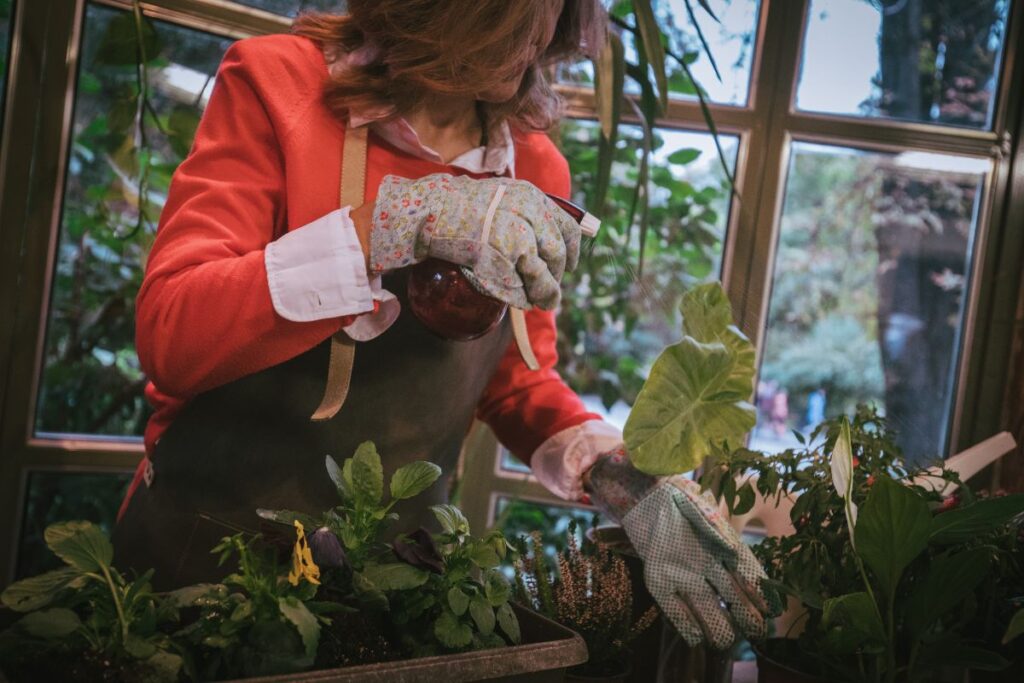
Plants need a few basic things to grow and thrive. These include sunlight, water, and nutrients. Sunlight is important for photosynthesis, which is how plants make their food.
Water is important for keeping plants hydrated and transporting nutrients. Nutrients can come from compost, garden soil, and fertilizers.
How to Determine Soil pH: Acidic or Alkaline?
Determining the pH of your soil is important for the health of your plants. Soil pH measures whether your soil is acidic or alkaline. Most garden plants prefer a slightly acidic soil, with a pH of around 6 to 7. You can test your soil pH with a soil testing kit, which you can buy online or at a garden center.
Tools You’ll Need: Rake, Shovel, Gloves, etc.
When you’re starting your garden, it’s important to have the right tools to get the job done. Some tools you’ll need include a rake, shovel, gloves, and a watering can. You may also need a hoe for weeding, a trowel for planting, and a hose for watering.
Starting a garden can be a great way to connect with nature and enjoy the outdoors. Whether you’re a seasoned gardener or a beginner, there are many tips and tricks to help you create a beautiful and healthy garden. With the steps outlined in this article and a little bit of patience and hard work, you can create a garden that you can be proud of.
Conclusion
Gardening is a fulfilling and enjoyable hobby that provides numerous benefits. By following the simplest way to get started with gardening, you can embark on a journey that connects you with nature, enhances your outdoor space, and brings you closer to the wonders of plant life.
Remember, gardening is a continuous learning process, so embrace the challenges and savor the rewards. Now, grab your gardening tools and get ready to nurture your very own garden!
